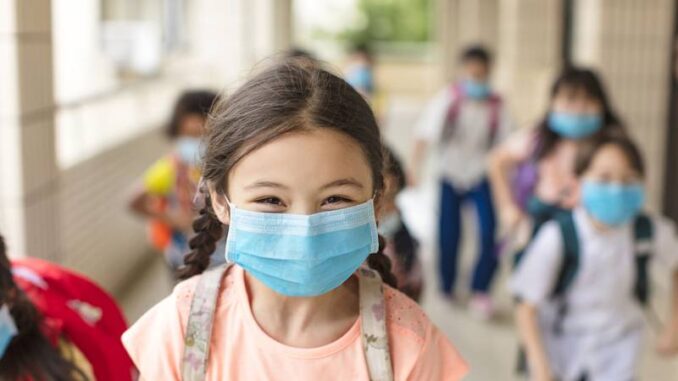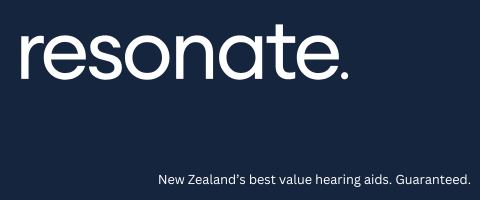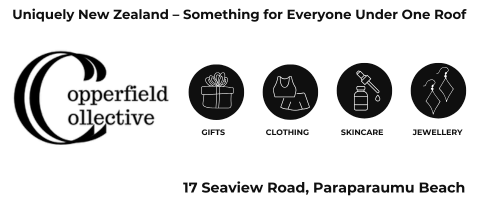
Last week it was reported that Associate Minister of Education Jan Tinetti had made an important decision on masks in schools. Ian Powell is a former executive director of the Association of Salaried Medical Specialists. He is now a health commentator based in Otaihanga on the Kāpiti Coast.
“It is a good decision but still short of what is required to reduce the reproduction rate of Omicron variant of Covid-19 to less than one which is what is required to stop the transmission of the pandemic and protect the health of the public.
Recently I heard a Paraparaumu school bus driver comment that she normally had 20 children on her bus. But this had dramatically dropped to five due to Omicron. It is a simple but striking story of both the very high transmissibility of Omicron compared with earlier variants, including Delta.
But the story tells more than this. Schools are natural and dangerous mass virus spreaders. They involve medium to large groups of people (mainly younger children and college students) who spend several hours, usually five days a week, indoors.
Then they return home, many of whom taking the virus with them. Public health experts advise that schools are the biggest virus spreaders.
Drifting to laissez-faire
In an earlier posting of Otaihanga Second Opinion (29 March) I discussed how the government had slowly but steadily drifted towards a laissez-faire pandemic response: What makes good public health sense also makes good sense for other things.
In effect, the positions of Labour and National are now virtually the same but with the former moving to the latter’s position rather than the other way around or meeting in the middle.
The first reported Omicron case detected in Aotearoa New Zealand was on 16 December but, due largely to effective border controls, it was not until February that it began its riotous take-off. This coincided with the start of the school year. Unfortunately, apart from some “encouragements”, the government’s laissez-faire drift had evolved to such an extent that there was no strategic plan to help schools.
Schools were left very much to their own devices and, despite best endeavours, struggled. Omicron’s high transmissibility meant that student and teacher absences were unprecedently high and disruptive. As a virus spreader, families were the first collateral damage followed by wider whānau and the public.
Call for a Covid-19 plan for schools
On 20 May worried public health specialists published in Public Health Expert (University of Otago) advice to government and other decision-makers on the urgent need for a Covid-19 action plan for schools: Urgent need for schools action plan.
They described the Government’s school policy as “essentially a business-as-usual approach, advising that schools would stay open through the outbreak.” Noting that there have been significant adverse consequences for school communities”, there was a need to “pivot” the pandemic policy in order to take “in-school transmission seriously.”
With winter approaching they outlined the basis of a recommended “Covid-19 Action Plan for Schools to support children’s access to education and to protect children, school staff, and their families from Covid-19 and from the return of other winter respiratory infections.”
Although well-argued, it was ignored. It is impossible, at least at this stage, to quantify the effect of this leadership failure on Omicron infections, hospitalisations and deaths. But we can be reasonably confident that the numbers would be discernibly lower.
At last: a change of position
But, on 22 July, a change of government position was reported: Masks in schools enforcement.
Schools are now expected to enforce a “mask wearing policy” for year 4 and above students from 25 July, the start of the third term, and continue until 19 August. The announcement was in the form of a letter to all schools by Associate Education Minister Tinetti.
Schools have also been provided with advice about masks for to communicate with parents and whānau. Stuff reports the response from schools as welcoming the announcement.
Epidemiologist Professor Michael Baker (one of the authors of the experts’ call for an urgent schools policy) praised the move while noting the obvious that he would have liked to have seen it sooner. “Limiting transmission in schools will save lives in New Zealand. This is a positive move in the right direction.”
Baker also called for a national mask strategy, which includes increased mask wearing in schools. “If masks are normalised, there’s less resistance. It’s just like wearing a crash helmet, sunscreen, a hat. Seeing other people do that it strengthens the behaviour. It’s the same with masks.”
Strategy and hope
As welcome as Tinetti’s announcement is, what is lacking is a government strategy towards the pandemic that is targeted, highly visible and gives people hope. This has been a failure of political leadership since last October reinforced by the farce of pretending that the traffic lights system was an alternative protective tool to alert levels.
With the level of disruption now in both the economy and health system, people need to know there is a way out of this crisis. They had hope and confidence under the elimination strategy towards community transmission and our high, by international standards, vaccination rate. Unfortunately, Omicron is too transmissible for an elimination strategy.
Compounding this is the loss of government confidence to provide the political leadership necessary to give people hope. The government wants its association with the pandemic as minimal as possible.
Even the constructive Tinetti decision did not lead to a media conference or even media release. It is as if the Government has been shaken by vociferous anti-vaccination protests including the occupation of Parliament Grounds.
What Aotearoa can do
New Zealand can’t eliminate Omicron. But it can, by taking the measures necessary to reduce transmission, reduce the reproduction factor to less than one. This would stop the pandemic. These come down to two fundamental focuses: mask-wearing and ventilation.
The Tinetti decision for school mask-wearing might be a circuit-breaker in the Omicron response. But this will not occur without a visible, practical and proactive strategy to follow
Schools need thresholds from government on when to continue with or resume mask-wearing post-19 August; when to close classes down; and when to close the whole school down. They need advice on how to plan for seamlessly transitioning to online teaching, where necessary, in order to reduce the disruption.
The Government has made a good start on ventilation by providing CO2 monitors to schools. These devices help to identify any areas of poor ventilation, allowing the necessary changes needed to keep fresh air flowing. This might lead to new ventilation mechanisms being installed.
The Government should take the lead on the extension of indoor mask-wearing and ventilation in schools and beyond to other indoor venues where people gather, for whatever reason, and public transport.
People deserve hope and it is a government leadership responsibility to do its bit to provide it.”
By Ian Powell
For more see: https://otaihangasecondopinion.wordpress.com/blog-2/














































